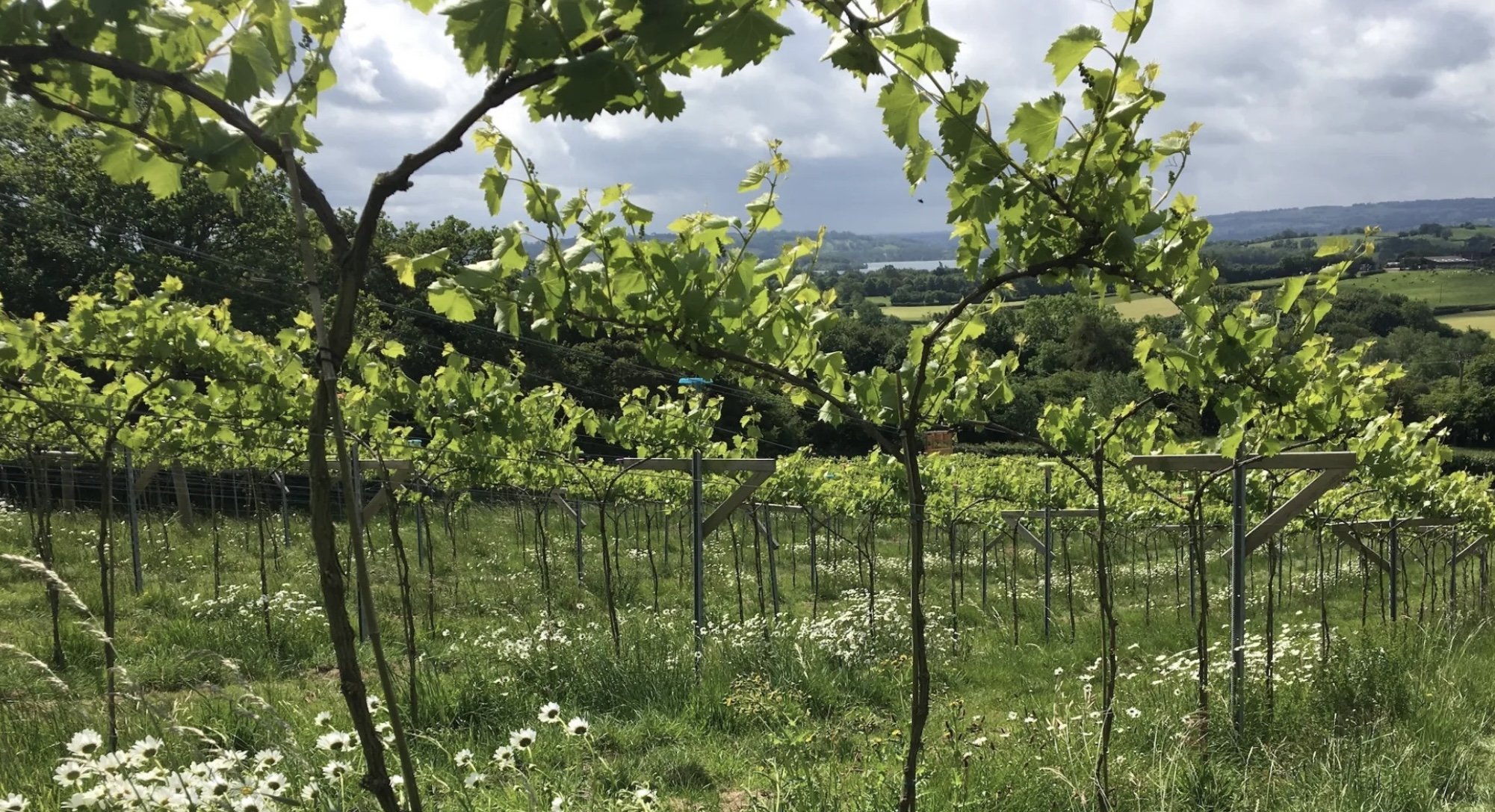Becoming a Consum’Actor; a guide to wine certifications
We all enjoy a glass of wine from time to time, but have you ever thought about the green credentials of your bottle?
In recent years, the agri-food sector has been swept up in a “green wave”, and the world of wine is no exception. Current and continuing climate change calls for profound reconfiguration of our agri-food systems, with the adoption of sustainability as the focal point. Grape production has increased globally over the last decade form 65 million to 77.8 million tonnes (Jindo et al., 2022); to support growing demand in the midst of our climate crisis the wine industry must look toward a set of practices that are “environmentally friendly, socially equitable, and geared towards sustaining productive and economically competitive fabric.” (Sgroi et al., 2023).
However, this isn’t entirely up to the wine industry. Achieving change is just as much the responsibility of wine drinkers. In order to create a shift within the wine sector, consumers should move towards a more conscious and ‘active’ consumption, using their values to guide their purchasing decisions. It is the evolution we are witnessing in consumption habits that acts as the driving force for industry change outlined within the United Nations Sustainable Development Goals (2015), specifically the “(promotion of) sustainable agriculture” (Goal 2) and “sustainable consumption and production” (Goal 12). So, the next time you’re browsing the shop for a bottle (or two), should you be taking into account more than just the flavour profile?
In this blog we will delve into the world of sustainable wines - helping you to navigate the myriad of certifications now seen on labels. Organic
Let’s start with one you’ve likely heard of, and for good reason - organic. With increasing awareness about the impact of conventional farming practices on our environment and health, the organic market is quickly growing, expected to reach a value of 23.51 billion USD ($) by 2030 (SKYQUEST, 2023). And it’s not just a fad - “organic wines can lead to a 23% decrease in carbon footprint as opposed to a bottle produced by conventional methods” (Safdie, 2023). Studies suggest that organic viticulture is further associated with “higher levels of biodiversity of both plant and animal taxa” (Nascimbene et al., 2012) and improved soil quality due to reduced tillage and chemical applications associated with management practices. What’s more, organic wine is actually good for you. With up to 80% more resveratrol levels that conventional wine, it’s packed full of antioxidants and anti-inflammatories (in case you needed another reason to pour a glass).
But what does it take for a wine to be organic? Organic certification may vary from country to country, although the basic guideline for organic production is the same all over the world. In the EU, for a wine to be rewarded with organic certification it must be made from grapes that have been farmed organically (without the use of chemical pesticides, herbicides or insecticides, synthetic fertilisers and GMOs) and only authorised adjuvants and additives. Unlike in the US, sulphite addition is permitted within the EU, but the total levels allowed are lower than those for non-organic wines: 100 mg/L for red wines (vs. 150 mg/L for conventional wine) and 150 mg/L for white and rosé (vs 200 mg/L). At the moment, sulphite additives are the best available natural preservatives for wine, which likely means that bottle of US Zinfandel you have in your cupboard is “made from organically grown grapes” rather than certified organic.
Biodynamic
Biodynamic goes a step further than organic wines. Although both organic and biodynamic management systems are characterised by low chemical inputs and the adoption of low intervention management practices, biodynamics views wine cultivation as much more than a set of agricultural practices. The principal of biodynamics is founded on Steiner’s anthroposophy theory (1894) which defined a holistic approach to agriculture requiring grape growers to work in accordance with the “earth and cosmos rhythms” (Castellini, 2017) by undertaking their natural flow and cycles. This looks at timing key activities namely planting, pruning, and picking with astrological cycles (Salpico, 2022). Although this sounds extreme, the values embodied within biodynamics is a key example of how we can achieve sustainability within our agri-systems through the view of “nature as a whole” (McKanan, 2018).
So, if sustainability is an important factor for you when deciding on a bottle of wine, it might be time to look into biodynamics.
Natural wine
The “Natural wine movement” is the latest buzz within the wine industry despite there being no real certification for the genre. Although the term has no strict definition, it is loosely refers to a style of low-intervention winemaking (Salpico, 2022). Like organic and biodynamic wine, naturally made wine eschews from any herbicides and agrochemicals within the vineyard and further avoids the use of any additives, chemicals, or cultured yeasts in the winery. Put simply, those involved seek to let wine run its natural course with as little interference from external inputs (both structural and chemical) as possible. With minimal intervention, the results can be pretty erratic - wines may vary from earthy to effervescent, taking drinkers on a distinctive journey with each bottle. You might love or hate it, but natural wine is worth a try.
A final word
Although organic, biodynamic, or naturally made wines are not, in themselves, “solutions to all the ills in the vineyard and winery” (Drew MW, n.d.), they are a step forward in our mission toward sustainable agriculture and conscious consumption. That is not to say, however, that a wine bottle without a “green label“ has not been made with the environment and people in mind; the cost of certification can be a deterrent for some winemakers therefore foregoing the title. If sustainable production is your priority, shopping at independent wine merchants is a sure way to get extensive information about the bottle you’re buying — Kernowine and Old Chapel Cellars are both great options if you’re based in Falmouth like me.
Bibliography
CASTELLINI, A., MAURACHER, C., TROIANO, S., (2017). ‘An Overview of the Biodynamic Wine Sector’. International Journal of Wine Research 9, 1–11.
DREW, B., (no date) Berry Bros. & Rudd. Available at: https://www.bbr.com/editorial/what-makes-a-wine-sustainable.[Accessed: 23 October 2023]
JINDO, K. et al., (2022) ‘Application of biostimulant products and biological control agents in sustainable viticulture: A review’, Frontiers in Plant Science, 13. Available at: https://doi.org/10.3389/fpls.2022.932311. [Accessed: 23 October 2023]
MCKANAN, D. (2017). Eco-Alchemy : Anthroposophy and the History and Future of Environmentalism. Berkeley, CA: University of California Press.
NASCIMBENE, J., MARINI, L., & PAOLETTI. M.G, (2012). ‘Organic Farming Benefits Local Plant Diversity in Vineyard Farms Located in Intensive Agricultural Landscapes’. Environmental management (New York) 49(5), 1054–60.
Organic Wine Market Size, Share, Growth Analysis, By Type, Packaging, Distribution Channel - Industry Forecast 2023-2030 (2023) www.skyquestt.com. Available at: https://www.skyquestt.com/report/organic-wine-market [Accessed: 23 October 2023].
SAFDI, S., (2023) What is the Carbon Footprint of the Wine Industry? greenly.earth. Available at: https://greenly.earth/en-gb/blog/ecology-news/what-is-the-carbon-footprint-of-the-wine-industry.
SALPICO, I. (2022) Sustainability in wine explained, Decanter. Available at: https://www.decanter.com/learn/sustainability-in-wine-explained-478803/. [Accessed: 23 October 2023]
SGROI, F., MAENZA, L., & MODICA, F. (2023) ‘Exploring Consumer Behavior and Willingness to Pay Regarding Sustainable Wine Certification’. Journal of agriculture and food research 14.
United Nations (2015) Goal 12 | Ensure Sustainable Consumption and Production Patterns, United Nations. Available at: https://sdgs.un.org/goals/goal12. [Accessed: 23 October 2023]




